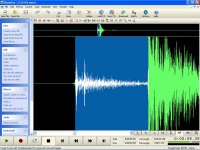HollyWood said:You guys make me laugh and laugh. You buy the books but eat the pages.
Hold cue at balance pt. not at extreme butt
Let the weight of the cue do the work and forget the follow through
18-22 oz. hold the cue lightly in griphand between thunb and first two fingers
if you hold the cue at it's balance point you're probably holding it 2" to 3" IN FRONT of the wrap, and no one does that....
you hold the cue BEHIND it's balance point.
you would not enjoy the feel of the balance being at your grip.
Last edited:


